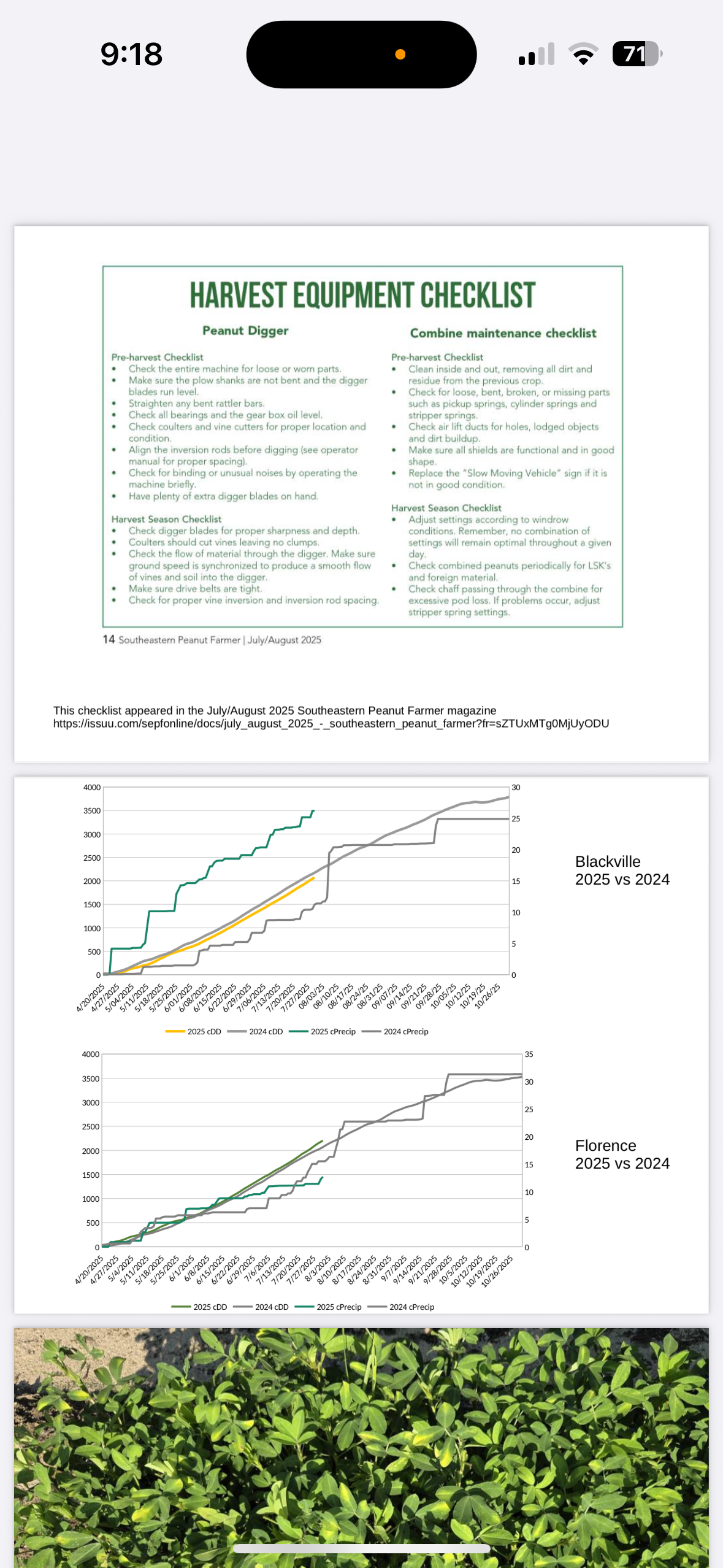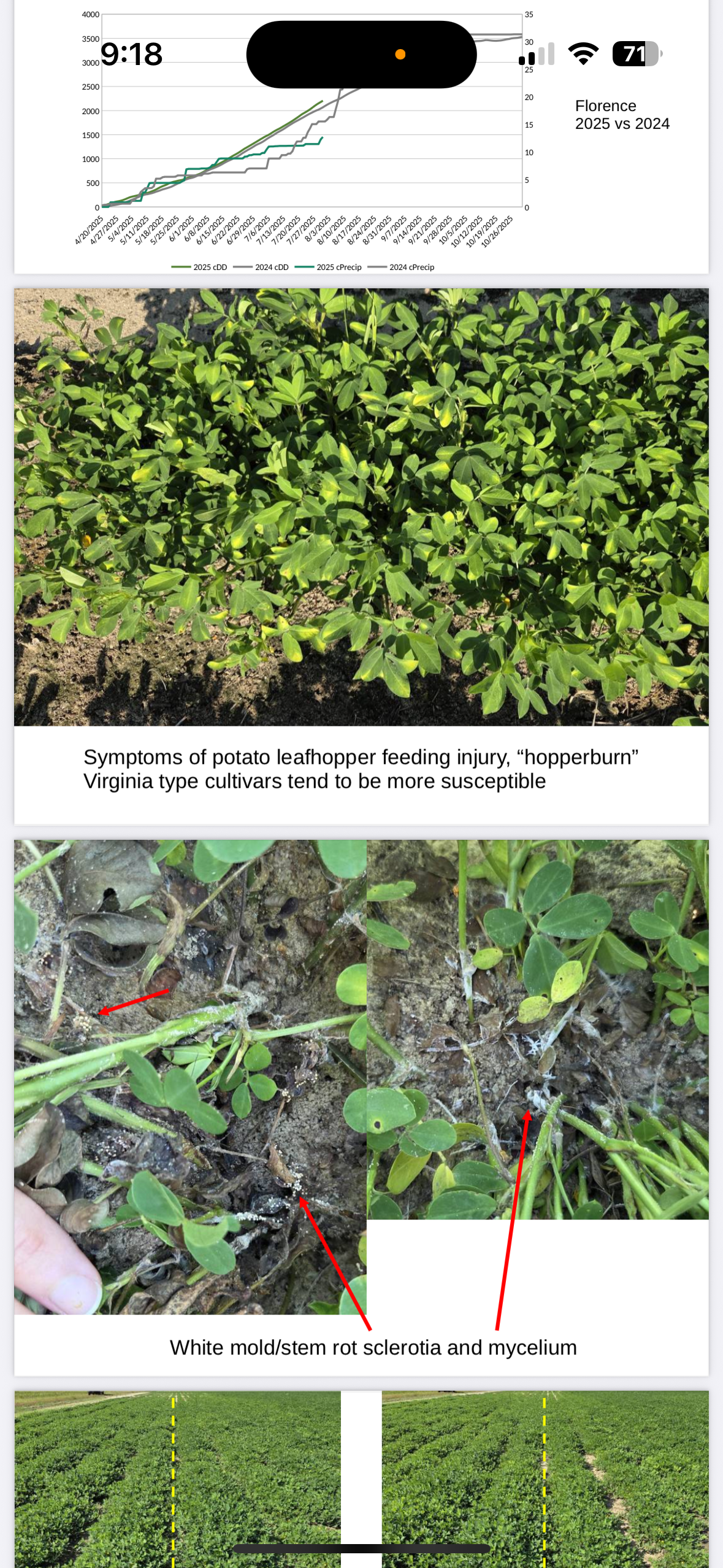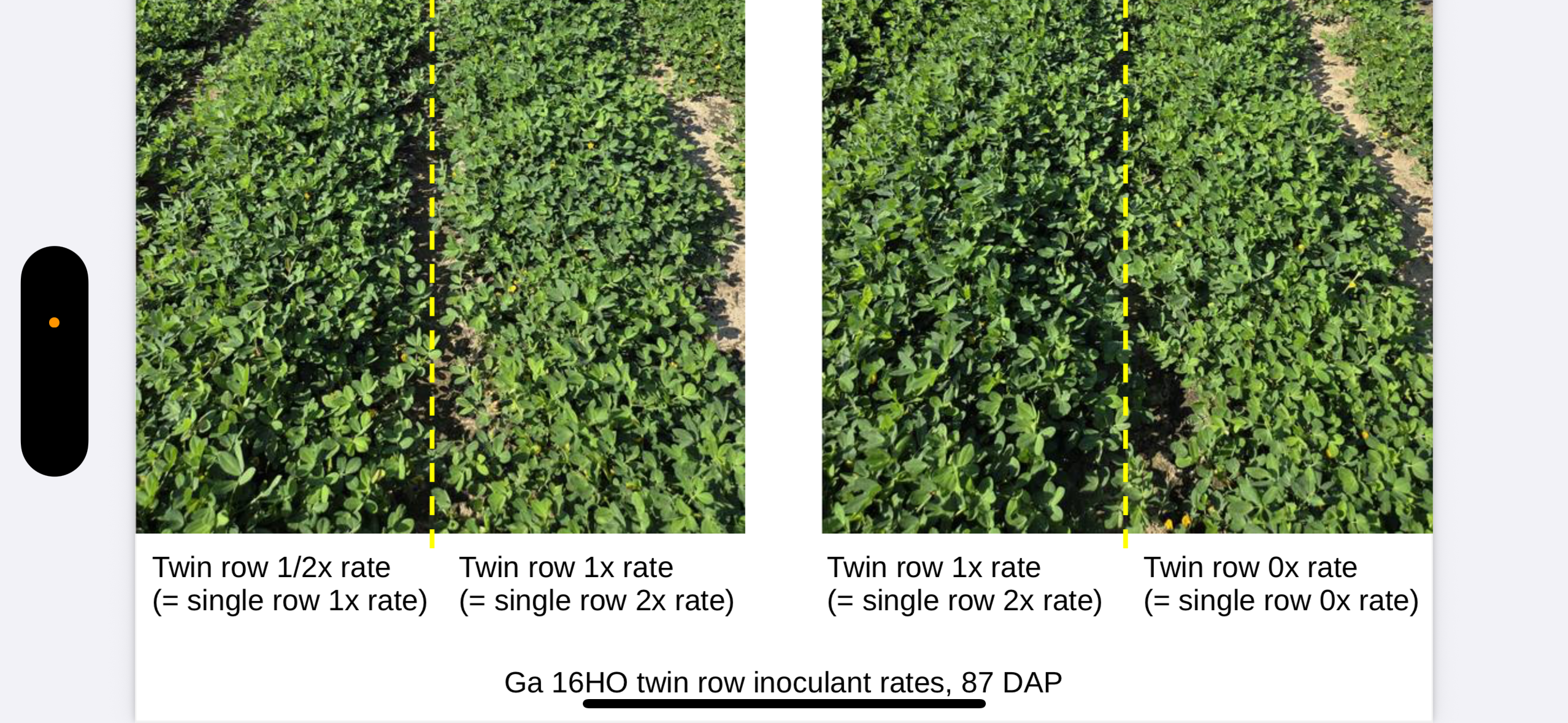Dan Anco Clemson Comments August 1 Peanut Notes No. 200 2025
go.ncsu.edu/readext?1086194
en Español / em Português
El inglés es el idioma de control de esta página. En la medida en que haya algún conflicto entre la traducción al inglés y la traducción, el inglés prevalece.
Al hacer clic en el enlace de traducción se activa un servicio de traducción gratuito para convertir la página al español. Al igual que con cualquier traducción por Internet, la conversión no es sensible al contexto y puede que no traduzca el texto en su significado original. NC State Extension no garantiza la exactitud del texto traducido. Por favor, tenga en cuenta que algunas aplicaciones y/o servicios pueden no funcionar como se espera cuando se traducen.
Português
Inglês é o idioma de controle desta página. Na medida que haja algum conflito entre o texto original em Inglês e a tradução, o Inglês prevalece.
Ao clicar no link de tradução, um serviço gratuito de tradução será ativado para converter a página para o Português. Como em qualquer tradução pela internet, a conversão não é sensivel ao contexto e pode não ocorrer a tradução para o significado orginal. O serviço de Extensão da Carolina do Norte (NC State Extension) não garante a exatidão do texto traduzido. Por favor, observe que algumas funções ou serviços podem não funcionar como esperado após a tradução.
English
English is the controlling language of this page. To the extent there is any conflict between the English text and the translation, English controls.
Clicking on the translation link activates a free translation service to convert the page to Spanish. As with any Internet translation, the conversion is not context-sensitive and may not translate the text to its original meaning. NC State Extension does not guarantee the accuracy of the translated text. Please note that some applications and/or services may not function as expected when translated.
Collapse ▲The following are comments from Dan Anco at Clemson. They are tailored for South Carolina production but apply to southeastern NC and to a degree much of the state.
Another item we can keep in mind for counties in the central to southwestern portion of the state is including 2 fl oz/A Dimilin 2L in with fungicide applications as a preventative measure against velvetbean caterpillar. This can include the 90 DAP and sometimes 75 DAP applications. Dimilin has a 28 day PHI, so it cannot go out with all applications near the close of the season pending variety harvest dates. Velvetbean is easy to control if it does show up, but an inexpensive insurance application against its showing up can help to bring one less thing to worry about as fields near and enter the home stretch.
The attached pictures include white mold/stem rot mycelium and sclerotia at the soil line in a field of Emery. This particular field did not have fungicide applied to it. Even where fungicide has been applied in a field, even a very good program, it is not uncommon to be able to find some white mold where field pressure has been high in previous years, particularly when the environmental conditions of the current year have favored its development. This year has had conditions favorable for this disease. With both white mold and leaf spot disease control, our overall goal is for effective preventative management that keeps disease development at low and non-injurious levels. This is opposed to complete sterilization where no signs of fungal life can be seen. That being said, effective programs help to limit the spread of this disease and to protect crop health and maintain yield potential.
Extension Peanut Specialist and Associate Professor
Department of Plant and Environmental Sciences
Clemson University – Edisto Research and Education Center
630-207-4926 cell





